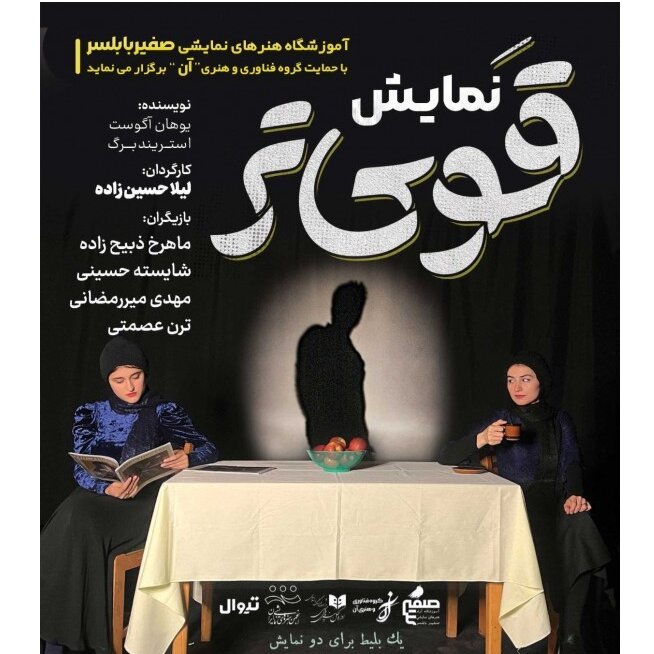Babolsar hosting August Strindberg’s “The Stronger”

TEHRAN-The play “The Stronger” written by August Strindberg and directed by Leila Hosseinzadeh started its performances in Babolsar, Mazandaran Province.
Mahrokh Zabihzadeh, Shayesteh Hosseini, Mehdi Mirramezani, and Taran Esmati are in the cast.
“The Stronger” is an 1889 Swedish play consisting of only one scene. The main characters are two women: one of them married and speaking, and the other one single and silent. They meet each other after a long time, by chance, on Christmas Eve in a cafe, and this is the beginning of the story.
The audience witnesses many reactions and imply meaning through the verbal recitation of the married character, combined with the silent reaction and physical activity of the unmarried character. The relationship between the two involves an unseen character: the husband. The play is semi-autobiographical.
It explores the power struggle evident in human psychology, confronting the audience with timeless themes of betrayal, infidelity, and hierarchy working within a masculine hegemonic society.
The women present on stage are representative of fragments of one character’s mind. While some parts are incapable of action and controlled by their persona’s ‘agents’, others are capable of speech and autonomy, facing the climactic confrontation of a destabilized relationship.
The Stronger is universally considered the quintessential short play and a superb monodrama of great psychological profundity. The play is unique in that the subject of the discussion, the husband, never appears. In “The Stronger,” Strindberg demonstrates what a keen insight and capacity for observation he possessed in regard to human nature and its machinations.
There is, of course, the fairly open question of which of the two women is the stronger, the married actress who takes all in stride, bends with the winds, and survives in the dog-eat-dog world, or the other one who has failed to bend and broken like a dry reed. But is her observation correct, or is it wishful thinking?
August Strindberg (1849-1912) is Sweden's foremost dramatist. He was also a schoolmaster, journalist, writer of scientific and political treatises, writer of short stories, poet, essayist, and painter.
As a dramatist, Strindberg's chief strength lies not so much in dramatic technique as it does in his trenchant and searching power of analysis of the human mind. His chief plays are very exact and narrow views of the feminine soul. Some of his own domestic bitterness finds expression in the feminine studies in his plays. He is very fond of showing the power of one character over another.
A prolific writer who often drew directly on his personal experience, Strindberg wrote more than sixty plays and more than thirty works of fiction, autobiography, history, cultural analysis, and politics during his career, which spanned four decades.
A bold experimenter and iconoclast throughout, he explored a wide range of dramatic methods and purposes, from naturalistic tragedy, monodrama, and history plays, to his anticipations of expressionist and surrealist dramatic techniques.
From his earliest work, Strindberg developed innovative forms of dramatic action, language, and visual composition. He is considered the "father" of modern Swedish literature.
In addition to “The Stronger,” Strindberg’s important one-act plays include “The Outlaw,” “Countess Julie,” “Creditors,” “Pariah,” and “Facing Death”.
“The Stronger” will remain on stage at the Black Box of Babolsar Culture and Guidance Department for a month until June 2.
SS/
